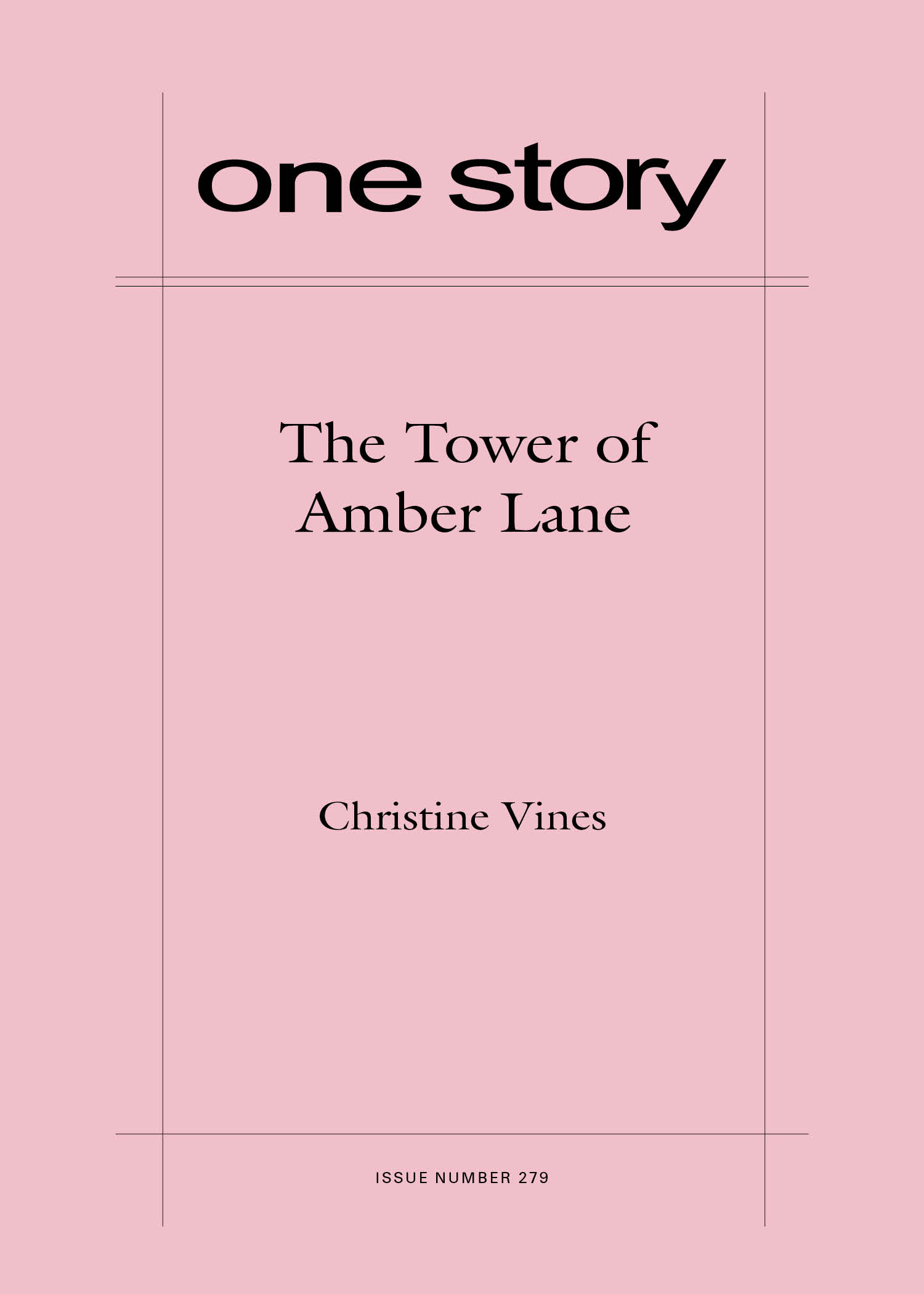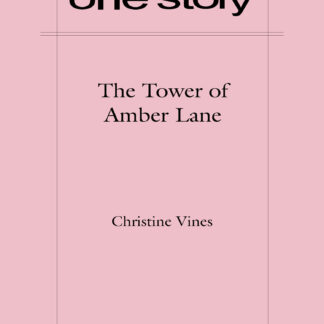
The Tower of Amber Lane
$2.50
123 in stock
Excerpt
It’s the coldest day of the year in a small town in upstate New York. Snow has fallen for the past two weeks, but now, momentarily, it has stopped. White hillocks have been made of the trash bins, a sparkling white carpet rolled out over concrete stairs. The rooftops and chimneys wear matching white hats.
Lissa braces herself against the cold as she slings her bag of recycled bottles and cans into the bank of fresh snow at the curb, where they land with a muffled clinking. In a few hours, she’s meant to be up the hill, where her friends are throwing a house party on campus. But as the wind takes fanged snaps at her face and neck, she wonders if she might be content to stay home.
She hops back to her heated building for refuge and considers whether a twenty-minute walk in subzero weather is worth the night she can already imagine in detail—shots of coconut rum at Gwen’s request, puffs from Mitch’s hookah, people whose names she sometimes remembers balancing on couch backs and laughing into each other’s shoulders, and finally, after much resistance, letting Hallie pull her onto the countertop where they will dance both ironically and unironically to a Justin Bieber song from their freshman year.
Christine Vines
Christine Vines is a fiction writer from Wichita, Kansas. Her work has appeared in Witness, Joyland, Electric Literature, the Chicago Tribune, and elsewhere. She was a runner-up for the 2018 Nelson Algren Literary Award and a fiction finalist for the 2018 Jeffrey E. Smith Editors’ Prize from the Missouri Review. She was a 2018 W.K. Rose Fellow at Vassar College, a 2018-2019 Steinbeck Fellow, and a 2020 Marguerite and Lamar Smith Fellow at the Carson McCullers Center for Writers and Musicians. She received her MFA from Cornell University, where she also taught English and Creative Writing.
Patrick Ryan on “The Tower of Amber Lane”
A lot of wonderful fiction has come from writers examining post-traumatic stress disorder. Katie Rogin’s novel Life During Wartime and Phil Klay’s short story collection Redeployment come to mind. So do Edward St. Aubyn’s five Patrick Melrose novels (which, while diving deeply into addiction, all have their roots in sexual abuse). The subject matter can be discomforting and even painful, but good fiction, as Raymond Carver said, “is partly a bringing of the news from one world to another.” And that’s what good fiction about trauma and post-trauma does: it brings the terror to the reader in a way that transcends observation and becomes something much more intimate.
Christine Vines’ “The Tower of Amber Lane” is good fiction that brings difficult news. One of the many things I admire about this story is that, within a fairly short amount of narrative time, it renders the lead-up to the trauma and then, while taking a brief step over much of the event itself, settles into the immediate post-traumatic period. There’s a boldness at work here, a willingness to dive deep into the hours and the very minutes following a harrowing night in the life of Lissa, a college student who’s living on the edge of campus and trying to climb out of the fellow-college-student dating pool. The point of view is close, the voice is intimate, and the effect is beyond chilling. This story is fearlessly fearful—and perhaps all the more so because the reader is right there with Lissa as she struggles to make the right decisions in a world that doesn’t always share her definition of what’s right.
The first time I read “The Tower of Amber Lane,” I started off deep in an armchair and ended up on the edge of the cushion, my hands white-knuckled as I held the pages. Christine Vines has written a story about, as she puts it, “navigating safety in intimate encounters.” Safety, as Lissa learns, is a relative term, and trying to navigate it can be terrifying. One Story is proud to be publishing this powerful work of fiction by an emerging writer of great talent.
Q&A by Patrick Ryan
- PR: Where did the idea for this story come from?
- CV: As with most things I write, I didn’t necessarily come up with this idea so much as it was knocking around in my brain—sort of haunting me—until I wrote it down. I was thinking a lot about navigating intimate encounters as a woman, and how quickly your sense of freedom and your sense of autonomy can shrink, often so soon after you’ve developed them.
- PR: How long did it take you to finish a draft you considered solid enough to submit?
- CV: I guess it depends on how we’re defining solid enough! I’m a perpetual editor, so after about a year I decided it was ready to start submitting. But even after that, I wound up editing it every time I opened it. A few years ago, I hit pause on submitting it. The story had most of what I wanted—the shape, tone, turning points—but I had that itching feeling I could get more resonance from it if I kept molding for a while. So I probably worked the clay for another three years before sending it to you all. And then of course I’d reworked some things again by the time you accepted it.
- PR: What was the most challenging aspect of writing this story?
- CV: Probably the not-so-technical aspect of entering Lissa’s headspace. This story felt like digging around deep in the emotional slop bucket and pulling up things that were difficult to access. When I first drafted the piece in 2015, I was really consumed with the idea of navigating safety in intimate encounters, so some of these emotions were already front and center for me. But every time I workshopped it or edited it in the following years, it felt a little like putting myself through something. I would have to sort of take a deep breath and go okay, here we go.
- PR: How different is the finished product from the story you originally envisioned?
- CV: I’d say it’s fairly similar to what I originally envisioned. Except that the initial draft was a story-within-a-story, told as an anti-fairytale. I got some feedback in a workshop during grad school that I didn’t need the frame, but I very stubbornly insisted on it for a while, because the fairytale aspect was important to me. The princess stories are often some of the first ways we learn about romantic pursuit as children, and the illustrations of persistence and wearing down a love interest over time plant these really dangerous ideas about romance and agency and consent, whether we nurture those ideas or not. Over time, I started to see how the fairytale aspect was actually embedded in the story already. The frame was unnecessary adornment, even actively distancing the reader in ways that were probably related to my own anxiety of presenting the story raw. There was something comforting to me in giving the reader some cushion from it, but ultimately Lissa doesn’t have that same cushion and I realized that I didn’t want the story to feel cushioned, that that was not really sufficiently true.
- PR: There’s a character in the story who isn’t given a name and is referred to only by his area code. Without giving too much away, can you talk about why you decided not to name him?
- CV: On a logistical level, he gets referred to as 607 because Lissa doesn’t remember his name. But that felt right for the story for a few reasons. For one, I think this is part of his allure. He’s such an abstraction to Lissa that she can imagine new versions of herself playing out in their interactions. The double-edged sword there, of course, is that the same mysteriousness she finds so appealing can be terrifying as the dynamic begins to shift. Also, I like the resonance that a number has—a big, three-digit number especially—the sense that he’s one in a long list of men behaving this way. And of course, there’s the sense of place an area code evokes—the way Lissa’s relationship to this place is forever altered after this experience.
- PR: One of the things I admire about this story is its ability to transmit Lissa’s discomfort and, in some spots, outright fear to the reader. There are scenes where Lissa is alone in her apartment that are as frightening as anything I’ve encountered in a literary thriller. Were you aware, as you were writing, that you were transmitting that fear so effectively? And how did you approach that aspect of the story?
- CV: Thank you for saying that! Her fear was one of the most important aspects of the story to me and a big part of what motivated me to write it in the first place—the way that kind of fear can live in your body and show up in response to all sorts of things that once felt benign. The aftershocks of traumatic experiences can sometimes be their own trauma. I’d say my approach to writing her fear was to center it in her body. That’s where fear and trauma express themselves, even when you haven’t mentally or emotionally processed their effect on you, so it felt right to focus on Lissa’s physical response throughout this story.
- PR: What are you working on now?
- CV: I’m finishing up a novel and a story collection right now. The novel examines religious and sexual identity, family, faith, loss. The ways we fail each other. It’s set in Kansas, where I’m from. The collection alternates between realism and fabulism. It looks at the separate realities we occupy and asks how, or if, we can communicate across them.
- PR: What is the best bit of advice about writing you have ever received?
- CV: When I was an undergrad, I did an independent study with the totally brilliant and generous Kiese Laymon, who told me to write into shame. I think it’s a natural tendency for a lot of young writers—it certainly was for me—to turn away from some of the hardest/most tangled moments, or to touch on them only obliquely. It feels like addressing difficult subjects delicately, but really, I think we’re scared that we don’t know how to handle those moments or don’t have the answers. It changed my writing a lot, I would say, when I dove intentionally into those thickets of shame for my characters. Fiction is sort of uniquely positioned to explore the things we leave unsaid, to take buried, private experiences and make them shared.
